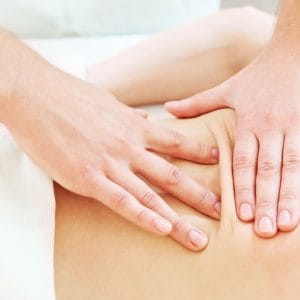
By Miss Kianna Gittens, Registered Physiotherapist
What is Manual Therapy?
Manual therapy involves the therapeutic application of external force on body tissues, typically using the hands (Kerry et al., 2024). It is a widely practiced intervention aimed at alleviating pain, improving mobility, and enhancing overall function.
Modern Framework
According to Kerry et al. (2024), historically, manual therapy was based on clinician-centred assessment, patho-anatomical reasoning, and technique specificity. The modern framework shifts towards holistic healthcare, emphasizing both practical elements and conceptual themes.
Practical Elements:
- Safety: Ensuring the physical and psychological well-being of both clinician and patient through effective communication, thorough assessment, and recognizing potential threats in physical, emotional, cognitive, and environmental domains.
- Comfort: Maintaining comfort through appropriate attire, posture, positioning, and force application, facilitated by ongoing communication.
- Efficiency: Organizing sessions to maximize assessment, diagnosis, and treatment effectiveness, incorporating patient education and self-management strategies.
Conceptual Themes:
- Communication: Engaging in shared decision-making through verbal and non-verbal language, including intentional touch to foster mutual understanding.
- Context: Creating a supportive environment with appropriate treatment spaces, attire, and cultural sensitivity.
- Person-Centred Care: Respecting the patient as a whole individual by considering their values, aspirations, fears, and cultural backgrounds. This approach involves screening for pathology, health education, and coaching to promote self-management.
Pain Mechanism Frameworks
According to Cook et al. (2023), manual therapy interventions are categorized based on three primary pain mechanisms:
Nociceptive Pain: Resulting from non-neural tissue damage, nociceptive pain can be managed through joint mobilization, soft-tissue manipulation, and nerve mobilization. Treatment success is measured by pain reduction and functional improvement, typically combined with exercise therapy and education.
Nociplastic Pain: This pain type arises from altered nociception without clear tissue damage. Effective management requires a therapeutic alliance, patient education, and multimodal approaches. Treatment success is evaluated across various domains, including pain, mood, and function.
Neuropathic Pain: Originating from nerve damage or dysfunction, neuropathic pain is managed by ensuring optimal nerve room, mobility, and blood flow. Manual therapy techniques, such as median nerve glides for carpal tunnel syndrome or lumbar flexion for radiculopathy, can alleviate symptoms.
Who benefits?
There is high quality evidence to support the benefits of manual therapy as a treatment intervention for people who have chronic pain in the lower back (CEP, 2020). Manual therapy is also beneficial for carpal tunnel syndrome, knee osteoarthritis, hip osteoarthritis (Cook et al., 2023).
Contraindications
It is contraindicated for all conditions that have diffuse motor/sensory loss, progressive neurological deficits, fever, IV drug use, a suppressed immune system, trauma, osteoporosis risk/ fragility fracture, history of cancer, unexplained weight loss, significant night pain and/or severe fatigue (CEP, 2020).
Benefits
Manual therapy serves to reduce pain and enhance movement and function (Kerry et al., 2024; CEP, 2020)
Adverse reactions
Adverse reactions may include: mild muscle soreness (Kerry et al., 2024) and muscle stiffness for less than 48 hours (CEP, 2020).
Bibliography
CEP. (2020). Manual Therapy as an Evidence-Based Referral for Musculoskeletal Pain.
Cook et al., (2023). Developing Manual Therapy Frameworks for Dedicated Pain Mechanisms. JOSPT OPEN.
Kerry et al., (2024). A modern way to teach and practice manuak therapy. Chiropractic & Manual Therapies.


Leave a Comment